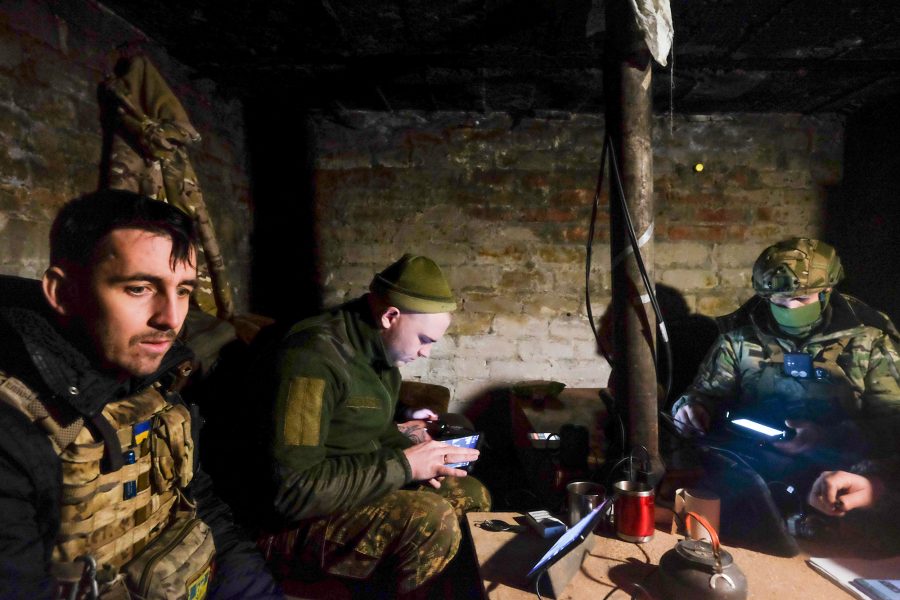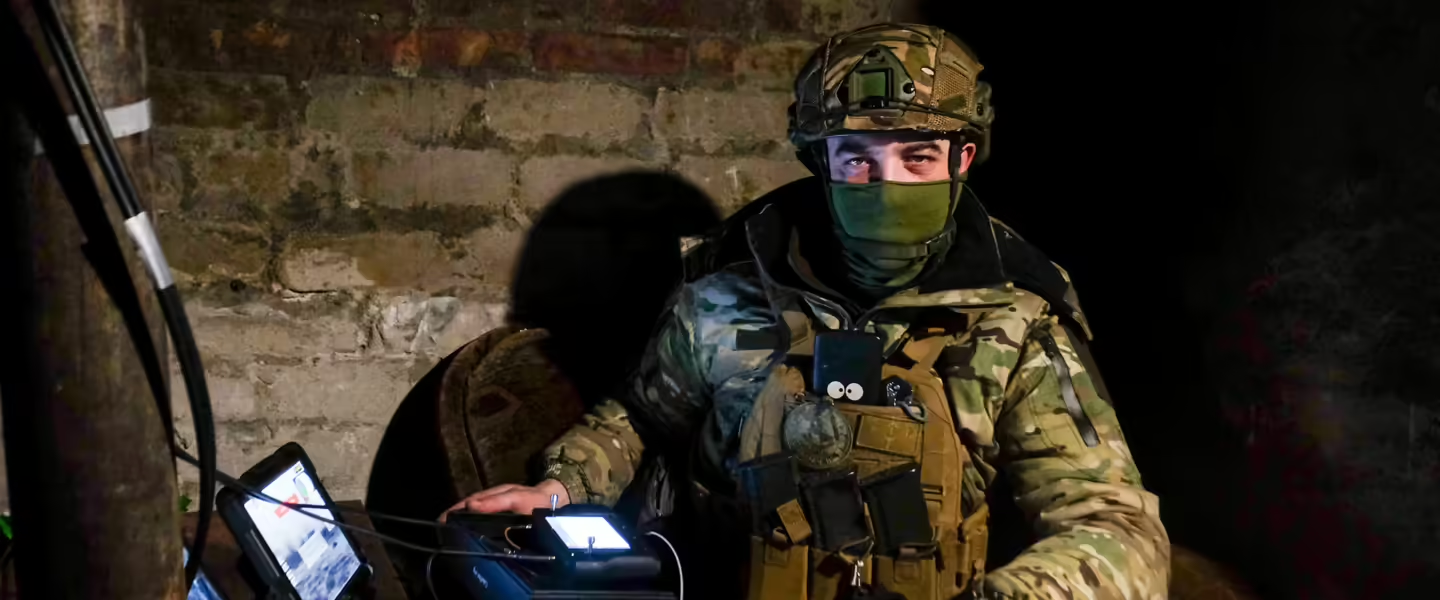Republicans in Congress have left Ukraine short on weapons to defend itself. The immediate answer: an increased reliance on a variety of deadly drones.
|
Listen To This Story
|
KHARKIV, Ukraine — On a recent trip to the front near Kharkiv in eastern Ukraine, a Ukrainian army officer, Roman, drove us down a dangerous, unmarked dirt road toward a farmhouse and a trench occupied by Ukraine’s 115th Mechanized Brigade. All the lights in the car had been switched off; Roman navigated by the dim glow of a flashlight dangling out the car window.
As we stepped out of the car, Roman reminded us, “If you hear incoming artillery, drop to the ground and put your hands over your ears. You know how it works.” At that moment, the night was calm, except for the orange flashes of airstrikes and artillery in the distance. When we joined a small group of Ukrainian soldiers in a dugout on the banks of the Oskil River, we heard the commander say, “Light them up!”
Everyone was watching the action on the screens of an eclectic assortment of tablets and laptops. Twenty seconds later, a trench filled with Russian soldiers — less than a mile and a half away — exploded in a burst of flame.
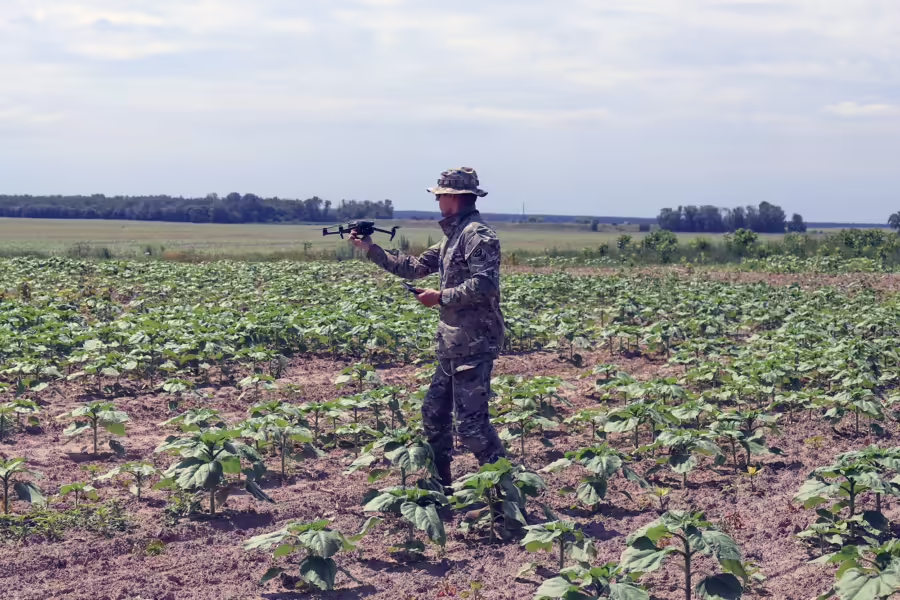
The Ukrainians had used a converted agricultural drone to drop an incendiary grenade on the Russian position. The Oskil River, which served as a temporary base for the drone pilots, runs through Kupyansk. The Russians captured Kupyansk in the early days of the war, and then were driven out during the Ukrainian surprise offensive in September 2022. Now, encouraged by Republican delaying tactics in the US Congress, the Russians have been escalating their attacks and are trying to recapture Kupyansk. The drone pilots along the river, which serves as a natural defensive barrier, are Ukraine’s first line of defense.
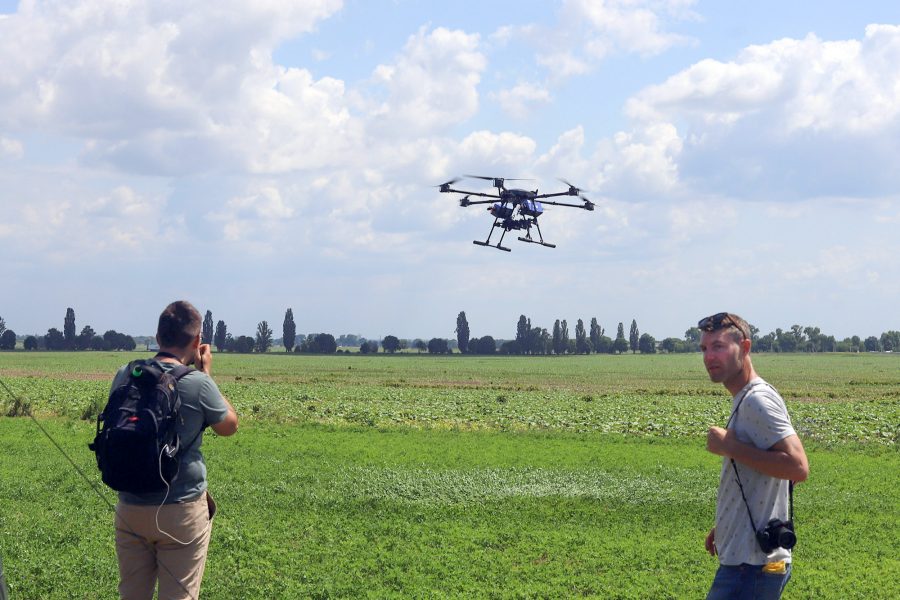
When we arrive at the front line, we are given a short tour around the base. A shed is filled with explosives including grenades and artillery shells. In the dim light, I accidentally kicked one. “Watch where you step,” snapped Roman, clearly worried that my clumsiness might blow the entire base up.
We leave the shed and see several soldiers in a clearing tending to a Vampire drone. The Russians have nicknamed this drone, which clearly terrifies them, “Baba Yaga,” after a witch in Slavic mythology. The term has become a slang reference to any particularly horrendous weapon. The Vampire is considered both extremely lethal and difficult to detect and defend against.
The soldiers quickly strap explosives to struts extending from the drone, and then we all retreat into a basement where the real work begins.
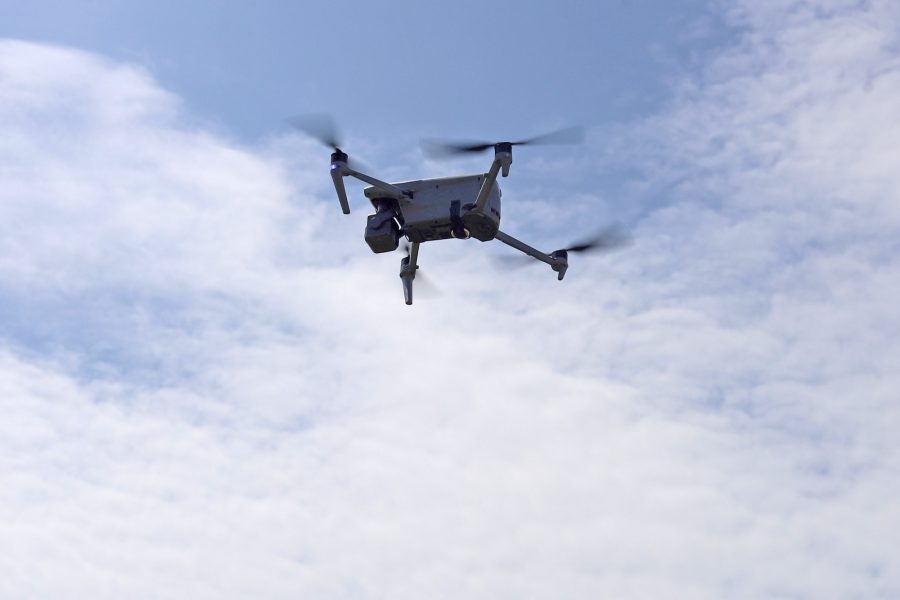
In the makeshift command center, several drone pilots sit with control pads and computer screens. If it weren’t for their camouflage uniforms, you might take them for teenagers immersed in video games.
“This is a war fought with drones and artillery,” said Sergiy, a drone pilot looking up from his computer screen. He added that the drones played a less important support role in 2022, as both armies failed to realize their usefulness on the battlefield. That changed in 2023, and they are now considered indispensable. A number of soldiers complained that the training they received abroad neglected instruction on drones and consequently didn’t prepare them for the kind of fighting that is now raging in Ukraine.
While we were talking, Roman suddenly told us to be quiet. The drones that had just been sent out had spotted movement and a potential target. Ukrainian units in the area are also using smaller FPV (first person view) and Mavic drones that can be bought cheaply on Amazon. The smaller drones fly high above the Vampire in order to get a broader view of the battlefield while the Vampire moves in for the kill. We looked over the pilots’ shoulders as they zoomed in on Russian soldiers, who appeared as black and white smudges on the screens. Every now and then, the images on the screens dissolved into static — the result of Russian jamming.
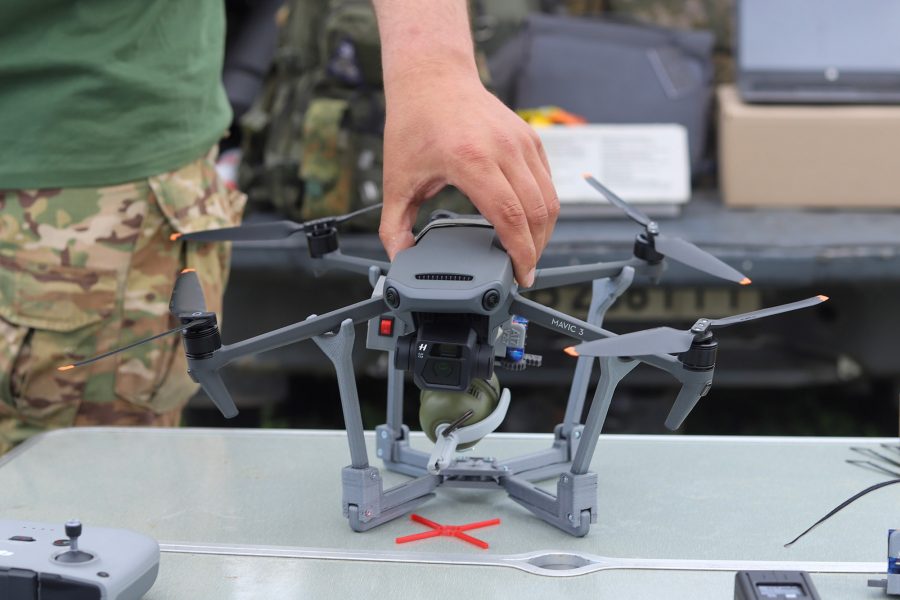
“Orcs,” said a pilot, pointing at his screen as the drone moved into position to drop a grenade. The first two attempts missed the target. The third — an incendiary grenade — did the job. “We are the eyes in the sky for the infantry,” said Artem, a drone pilot. “Without us, their only option is to sit in the trenches and wait to die. We tell them when there is a window in which they can attack. We can also tell them if the Russians are coming at them, or if they have tanks, everything.”
The increased emphasis on drones is supported not only by official army production units, but also by a significant civilian manufacturing effort that is producing military equipment, including drones.
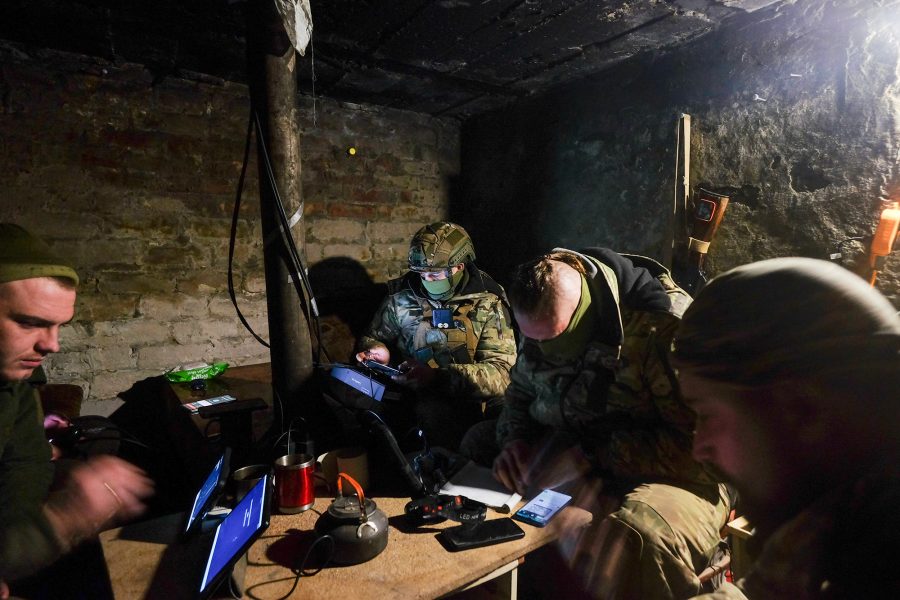
From his workshop at a secret location in nearby Kharkiv, Ukraine’s second biggest city, Sergiy, a 45-year-old former computer technician, is, along with his colleagues, producing dozens of drones. “I lost many of my friends and siblings in this war,” he said, ”so I want to save as many people on the frontlines as I can.” He added that his only job is to work towards a Ukrainian victory.
Inexpensive parts, rotor blades, batteries, and cameras are usually imported from China, and then assembled into drones and equipped with the explosives that turn them into deadly weapons. A typical FPV drone can be purchased on Amazon for less than a thousand dollars. These small drones have become some of the war’s most omnipresent and deadly weapons for both sides.
For Ukraine, as Western aid has dropped and supplies of rockets and ammunition have slowed, Sergiy said these drones have become a crucial weapon in stopping the renewed Russian advances. Dozens of these “do-it-yourself” arms production initiatives have been set up by tech- savvy Ukrainian civilians looking to plug the gaps in military aid and Ukraine’s own industrial capacity.
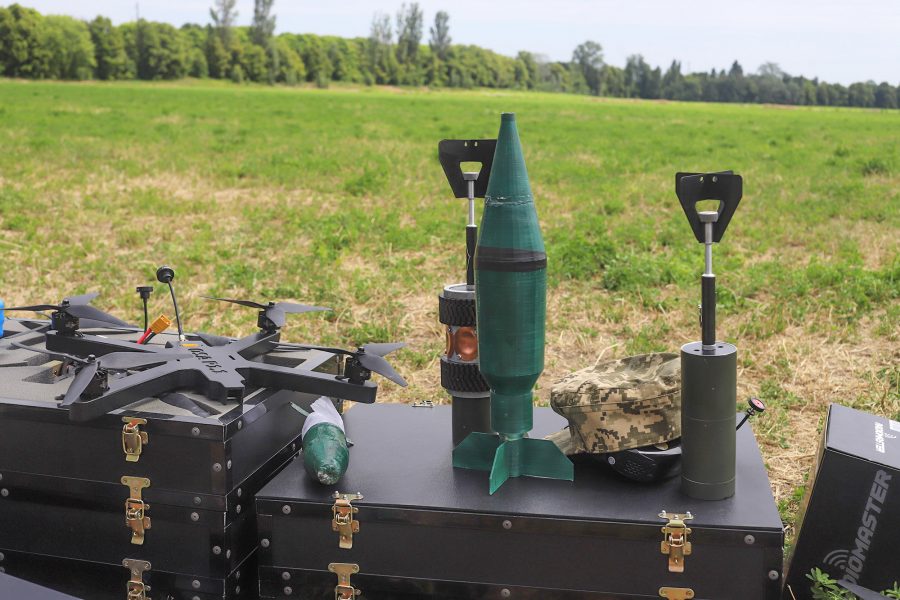
A 155mm artillery shell costs between $3,000 and $8,500 to produce, without considering the transport and logistics costs to get them to the battlefield. A locally produced drone can be in the hands of an operator within hours. Sergiy and his friends manufacture FPV drones for as little as a few hundred dollars. Even the more expensive, professional drones, such as the Vampire, that can drop individual explosives on Russian positions and return to be reequipped, cost around $30,000, compared to the millions that each artillery gun costs.
The Ukrainian government has set a production target of a million drones per year, to make up for the shortfall in artillery. Last year, in a field in a secret location outside Kyiv, they invited hobbyists, industry leaders, and journalists to a demonstration of the “Army of Drones” project. It featured a wide variety of drones, as well as their potential uses, including FPV drones, the Vampires seen in Kharkiv, and glider drones that can be hand-launched with bombs strapped to them.
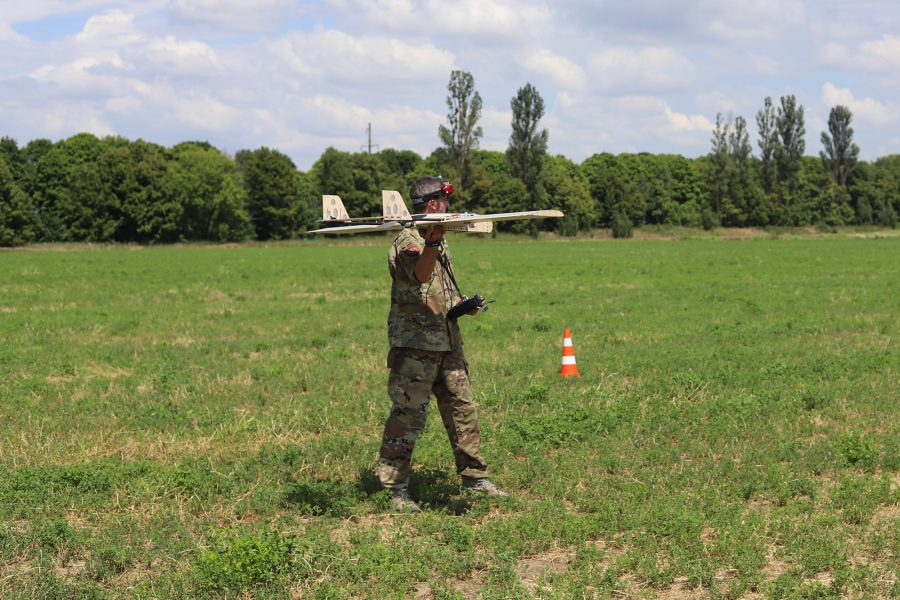
Mykhailo Fedorov, Ukraine’s 32-year-old digital technology minister, told attendees that Ukraine risked falling behind in a “fast-paced technological war” against Russia’s much larger population and industrial base. “The government needs to think and act as a technology company, to be agile, to make fast decisions and to move faster,” he said. But, as it has been since the start of the full-scale invasion, the war effort is not a government-only initiative — it is deeply integrated into civil society.
Still, Ukrainian soldiers remain hamstrung by the drones’ limitations. Drones cannot yet replicate all the advantages of artillery, particularly a shell’s speed to target and explosive force. Ukraine’s aging and exhausted armed forces desperately need more soldiers and weapons. The easy confidence in victory that was once on the lips of everyone in Kyiv has evaporated. Roman, the drone commander, remains confident in the eventual victory he has been fighting for since the Donbas war broke out in eastern Ukraine in 2014. He just doesn’t know if he will still be here when it is finally achieved.
